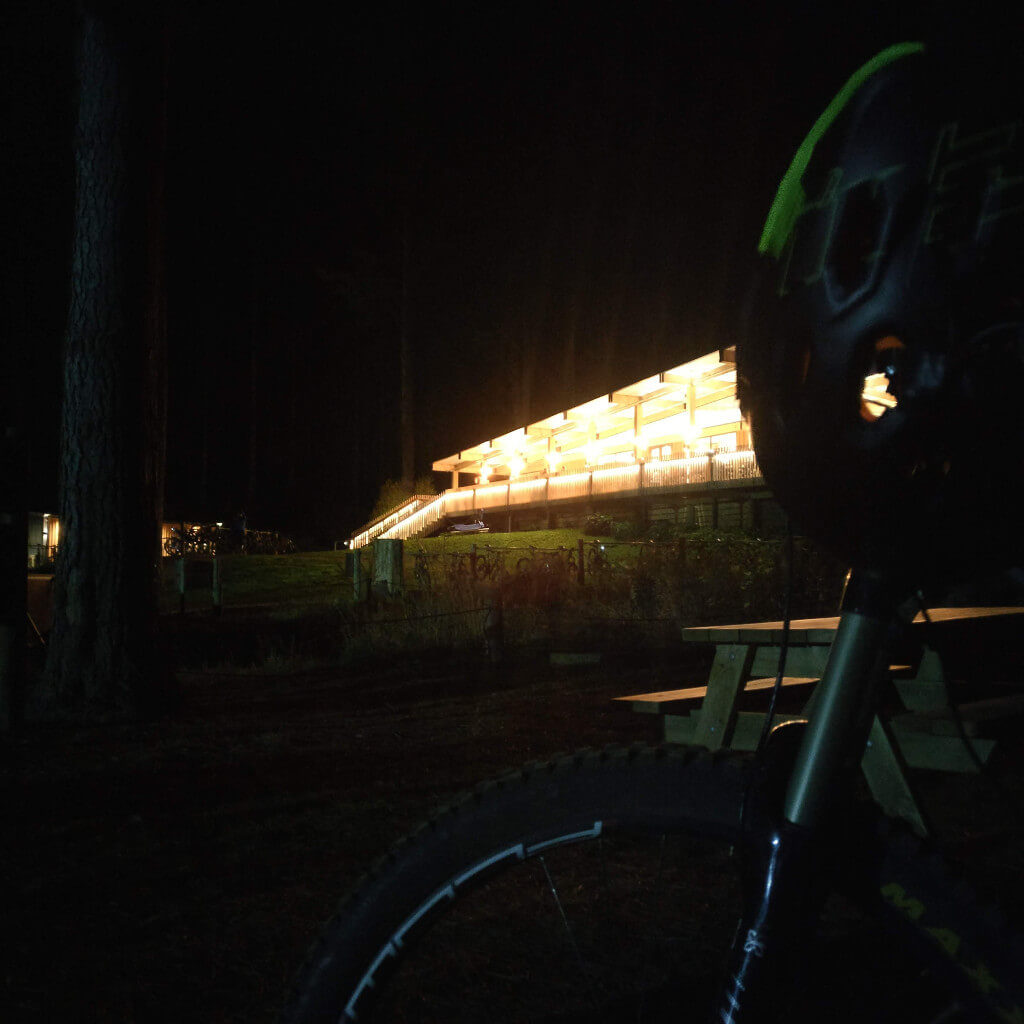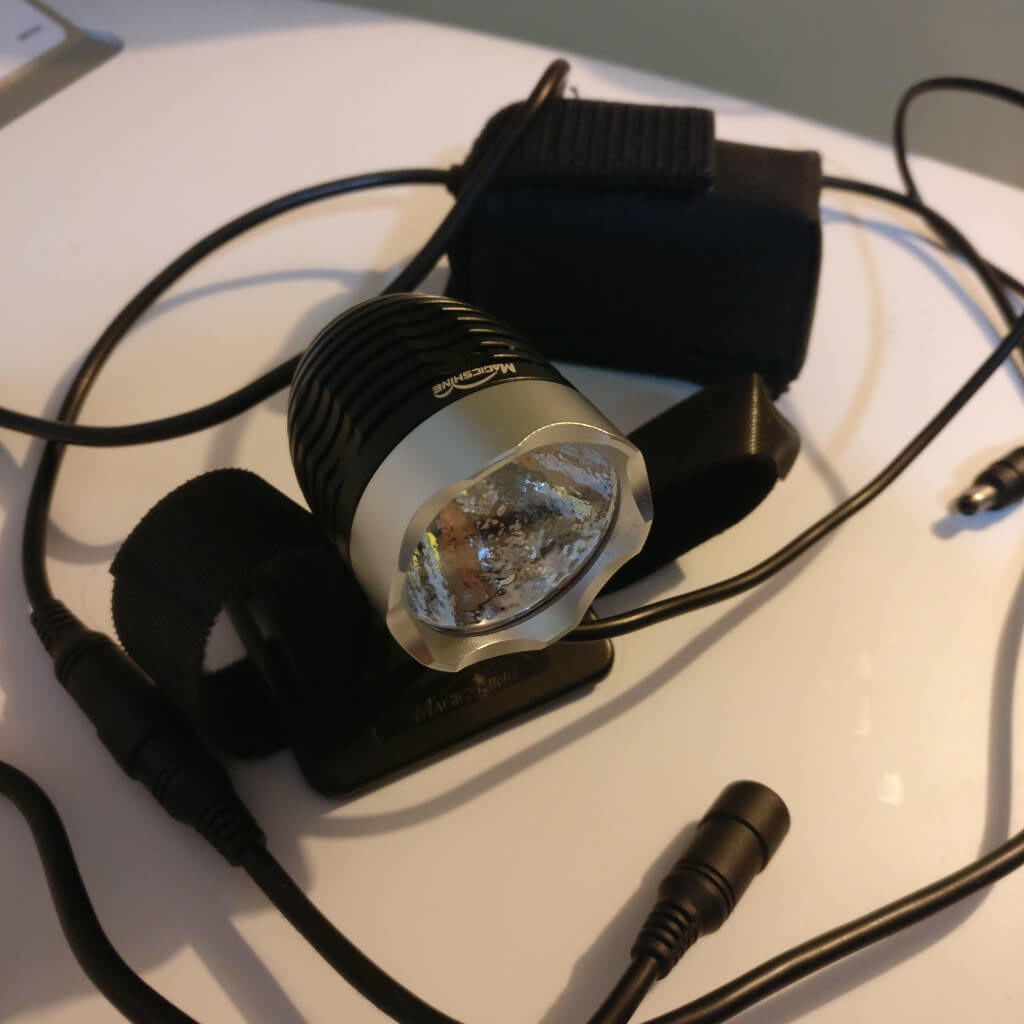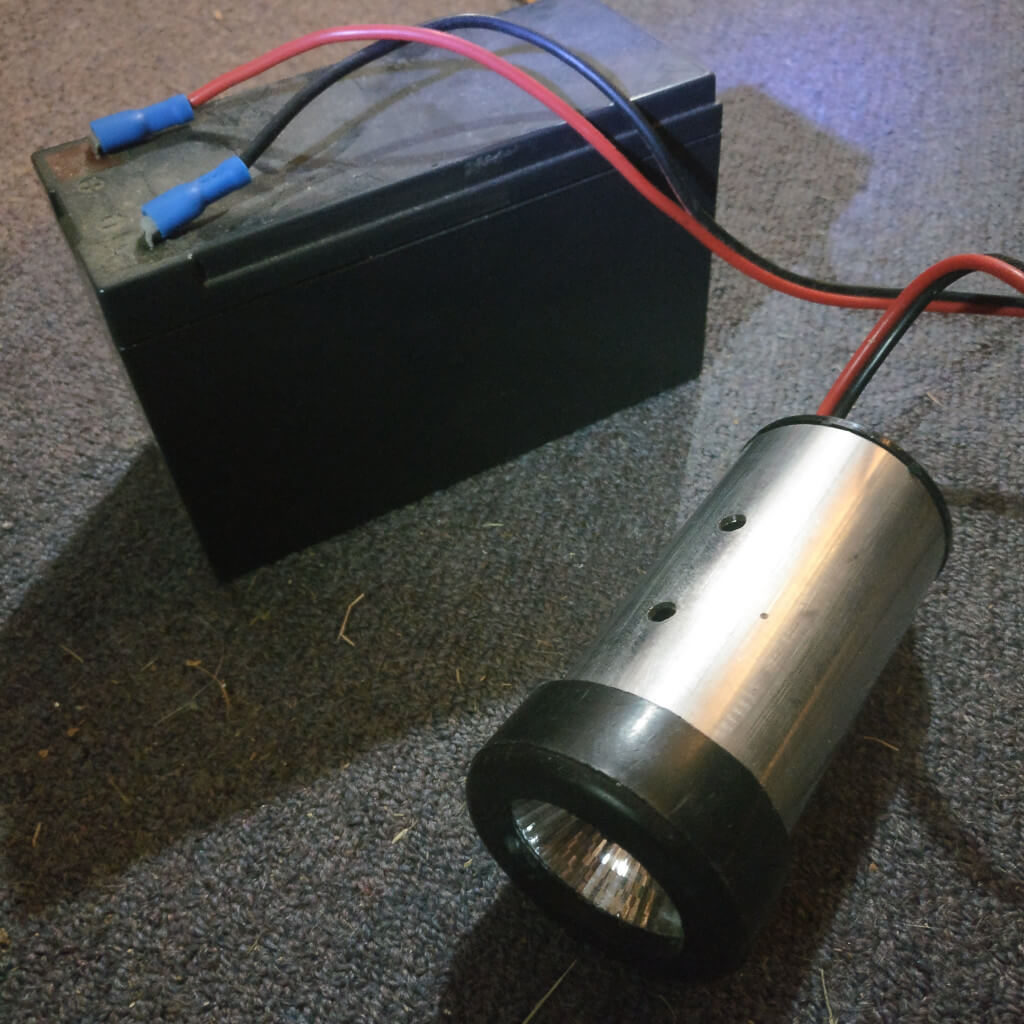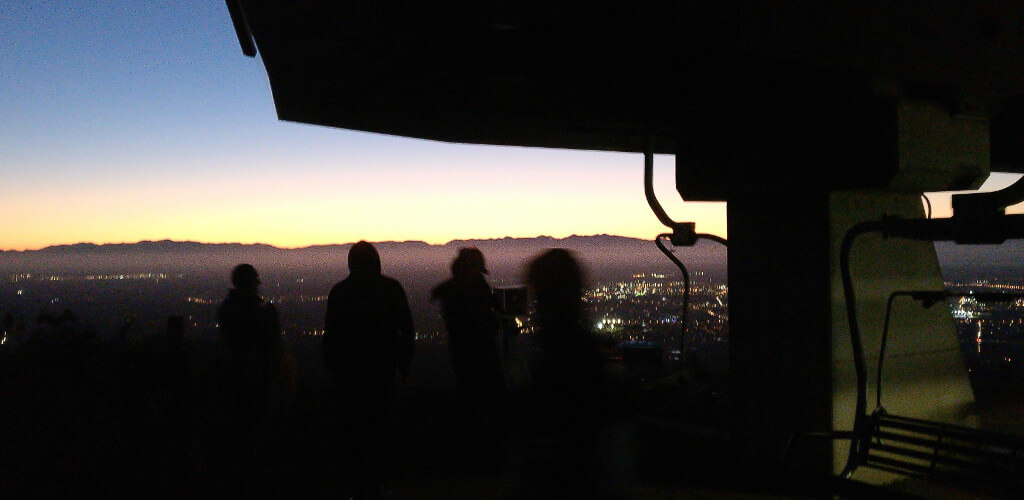600 lumens is the bare minimum to go mountain biking on any kind of technical mountain biking trail. However, 1000 lumens or more is definitely recommended – particularly if downhill or bikepark trails are involved, as higher speeds and more frequent technical challenges such as rockgardens, drops, and jumps mean that better visibility is required.
Mountain biking at night is one of those things that a mountain biker and a “normal person” see as dramatically different things!
To a “normie” (I promise I don’t refer to non-riders as this!), the concept of biking through a forest, up and down challenging terrain, in the middle of the night is at best a totally foreign concept – and more likely, instantly dismissed as utter madness!
To someone like me – obsessed with mountain biking – the adventure of heading out into the forest to ride trails with friends at night (most often on a cold winters night in fact) is just super exciting.

Trails you’ve ridden a hundred times suddenly look completely different, and speeds seem much faster than before – which is always an interesting combination.
The adrenaline hit from riding a drop at night (most definitely one you are very familiar with!) is noticeably higher. At least it is for me.
Seeing the trail lit up like daylight only where you are looking, and having the rest of the landscape hidden by inky darkness gives a strange kind of tunnel vision focus to your mountain biking experience.
What type of lights do I need?
Modern mountain biking lights are relatively light weight, featuring super bright LEDs, with rechargeable lithium batteries – either as battery packs, or incorporated into the body of the light.
Often the headlamps have heatsinks built into their metal body, as they get quite hot powering such bright lights.
And speaking of bright lights – that is indeed what you are wanting.
The brighter the better.
Within reason of course!

Where should I place my lights on my bike?
Lights are best placed on top of your helmet, angled so that the light beam is essentially naturally where you are looking.
I use a couple of loops of doublesided velcro tape – one for each side – to allow me to sinch it down around a couple of the helmets air vents.
When the light is mounted to your head, make sure it is following your line of sight.
This means that when you’re looking at technical features up close, it is properly illuminated – and equally when you are gathering speed and looking further down the trail, you can see it lit up like daylight (with a bright enough light setup).
Riding with only a light on the handlebars is not recommended – but can be a nice addition to the helmet light, to help more broadly illuminate the trail ahead of the bike, while the headlamp spotlights where you are looking.
I run a head mounted light with a claimed lumens rating of 900 (though like a lot around this cheaper end of the price range it feels dimmer than 900 lumens to me), and a bar mounted light that is around 400 for a bit of a boost.
My riding buddies light which cost 5 times as much as mine is noticeably brighter. It lights up the terrain like daylight, and I seem to recall is only rated around 1500 lumens – which seems closer to the actual brightness.
That said, I did buy my single illuminator light many years ago now, so I’m sure it has long since been surpassed with newer models from these and other factories.
Night riding is an experience
Everyone you talk to who has been mountain biking at night will have stories to tell.
One occasion that jumps out to me was when a few years back we went riding through the trail network of a nearby forest, pitch black out – and discovered that the large river nearby had basically burst it’s banks and was flooding a bunch of the trails.
What started out as a night zooming through the singletrack was interupted with nighttime flooded forest exploration – and then back to the riding!
Other night time downhill runs after work are great memories – and even rare chairlift bikepark night sessions. So good.
Apologies for the potato quality night riding video footage below, but you get the idea – hitting drops in the dark is awesome. This was when we headed out to a local chairlift-fed bikepark which put on a night riding evening.
Other things to watch out for at night
It’s an adventure getting out and riding with your super bright light on your local trails – but don’t forget that the trails can look and feel very different under nighttime conditions.
And it’s not just how they appear once illuminated, there are many other things that can crop up, as I have experienced many times!
It’s cold in them thar hills
Depending on what region of course, but for many places with cold winter nights getting down towards freezing overnight, it can get pretty brutally cold with the whistling wind of the trail (and potentially chairlift or other uplift method removing the heat from the climb).
Dress warm if this is your type of region – multi layers.
I find a riding jersey, a merino layer, and a windbreaker combo works well.
I’ve always just used regular gloves, but presumably winter riding gloves would stop your fingers from getting quite so frosty.
Slick or icy trails
If it is a cold night, you can find dew starting to form on the ground – which can be an issue particularly if you’ve got clay surface to your trails. They can get a bit slippy.
Ok, *very* slippy.
Rocks too.
But that’s what mountain bikers thrive on right? Reading the changing terrain and situation, and reacting – hopefully in the right way!
Animals
You’ll definitely encounter some different animals at night – and depending on where you are in the World, possibly some that might be bad for your health.
You should fully understand what the wildlife situation is in the area you’re about to ride in during the day – and this is doubly recommended at night.
The only nocturnal animals I’ve (almost) run into on the trail have been hissing and/or frantically fleeing possums, tearing down the trail ahead of my bike.
Night riding is not new – but the gear is so much better!
Many years ago, wanting to head out to the downhill trails after work in the shorter winter days, a friend and I built a couple of DIY bike lights – what a work of art they were.
That may be overstating it.
They were bright (or at least they seemed it at the time – not sure how they’d stack up against the modern LED lights), and they were cheap.
We used a section of alloy pipe, a bright halogen bulb, a switch, some speaker wire, and a super heavy 7v lead acid battery in the backpack to power it.

How far things have come – so awesome.
Still, we had a laugh out on our bikes, and that’s all that matters, isn’t it 🙂

